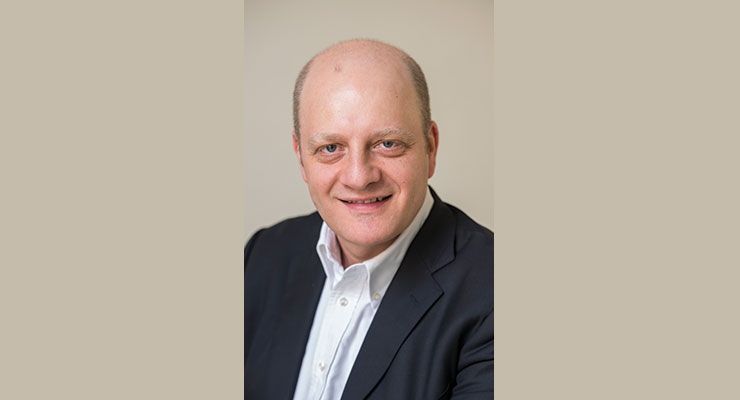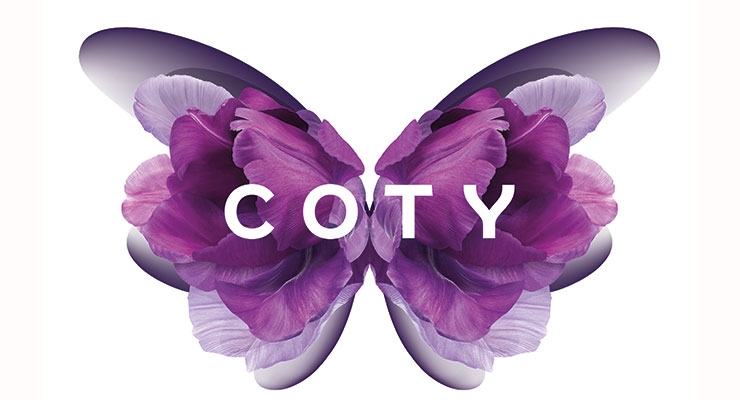11.03.16
Update: Coty ranks at #13 on our latest report Top 20 Global Beauty Companies 2021.
New York, NY
www.coty.com
Beauty Sales: $4.3 billion
Key Personnel: Bart Becht, chairman; Camillo Pane, chief executive officer; Edgar Huber, president global markets; Esi Eggleston Bracey, president, Coty Consumer Beauty; Sylvie Moreau, president, Coty Professional Beauty; Mario Reis, chief global supply officer; Ralph Macchio, chief scientific officer; Simona Cattaneo, chief marketing officer for the Luxury Division; Shannon Curtin, senior vice president North America, Coty consumer beauty.
Major Products/Brands: Fragrances, skin care and color cosmetics brands including Adidas, Calvin Klein, Chloé, Davidoff, Marc Jacobs, OPI, Philosophy, Playboy, Rimmel, Sally Hansen, Bourjois Cosmetics.
New Products: Miu Miu fragrance, Marc Jacobs Decadence, Marc Jacobs Kiss Pop collection, Sally Hansen 18K Gold Cuticle Eraser, Rimmel Volume Colorist Mascara.
Comments: In this year’s Top 20, Coty comes in at No. 14, but next year, what was once known as “the world’s largest fragrance company” could present a whole different story. With its $12.5 billion deal to acquire 41 P&G brands taking hold this month, the transaction could catapult it to the top quarter next year, placing Coty among the top five beauty industry players—and with a whole lot more brands listed under its name.
The P&G deal will reportedly double Coty’s annual revenues to more than $9 billion, making it not only the world’s largest seller of fragrances, but the third-largest company in color cosmetics. Picking up brands such as Wella may also give it a sizable presence in the hair care market. And together, all of the new acquisitions will help to boost Coty’s presence in worldwide markets where it has not been as active (the reason the company originally bid on Avon several years ago).
Fiscal 2016 proved to be a challenging one at Coty as it set up for the change, with a whole new management structure, picking up industry leaders from P&G, Walgreens and Burberry along the way, pending the deal’s closure. While the volatile fragrance market improved for the first time in years, as demand picked up in the Americas and Asia Pacific, it couldn’t completely offset the costs of the P&G merger, and of Coty’s billion-dollar acquisition last year of the beauty care unit of Brazilian consumer goods company Hypermarcas SA.
Coty Inc. announced financial results for the fiscal year ended June 30, 2016, with net revenues of $4.3 billion, a slight decrease from last year. The fourth quarter was its second quarterly loss in a row. In 2015, Coty also purchased Bourjois cosmetics from Chanel and bought several Brazilian skin care brands as well as digital marketing firm Beamly in an attempt to build its e-commerce business.
On a like-for-like basis, the 1% decline in the underlying business was driven by 3% like-for-like declines in both Fragrances and Skin & Body Care partly offset by 2% like-for-like growth in Color Cosmetics. The like-for-like net revenue decline also reflected moderate growth in the power brands, offset by declines in the remaining portfolio.
By Category
Fragrances net revenues declined about 8% due to foreign currency translation as well as declines in celebrity and mass fragrance brands. These results were partially offset by growth from Marc Jacobs and Calvin Klein, as well as the strong launch of the Miu Miu fragrance.
Color Cosmetics net revenues increased 7%, aided by the Bourjois acquisition and strong growth in the Rimmel and Sally Hansen brands, especially reflecting the international roll-out of Sally Hansen’s Miracle Gel.
Skin & Body Care net revenues fell 10%, reflecting declines in Playboy and philosophy, and partially offset by growth in adidas.
By Geographic Region
In the Americas, reported net revenues decreased 2%, due in part to lower demand for celebrity and lifestyle fragrances, N.Y.C. New York Color and OPI, and declines in Latin America. Key growth brands in the region were “power brands” Marc Jacobs, Sally Hansen, and Rimmel.
Reported net revenues for Europe, the Middle East & Africa were flat for the year, including a 7% contribution from the Bourjois brand acquisition. Key growth brands in the region included Rimmel, Marc Jacobs, adidas, Sally Hansen and Calvin Klein.
In Asia Pacific, net revenues declined 3%, with like-for-like growth in Australia, offset by like-for-like declines in China. Adidas, Rimmel, OPI and Sally Hansen were top performers.
News of Note in 2016
In January 2016, two P&G-owned brands said no to the Coty deal: Dolce & Gabbana; and Christina Aguilera Perfumes, which was later picked up by Elizabeth Arden.
In Coty’s drive for designer fragrance rather than celebrity names, the company closed a deal with Tiffany to develop, produce and distribute Tiffany scents for men and women.
In April, Coty hired Burberry’s head of beauty Simona Cattaneo as chief marketing officer for the luxury division, then quickly reported that Shannon Curtin, group vice president of beauty and personal care at Walgreens would join Coty as the U.S. general manager. Curtin will be tasked with getting Coty’s consumer beauty brands back on track, especially Sally Hansen.
In July, Coty announced that its Board of Directors had appointed Camillo Pane as chief executive officer and member of the Coty Board—positions that became effective the day after the closing of the merger of P&G Specialty Beauty into Coty.
Looking Ahead
Coty says it remains focused on growing its power brands through innovation, strong support levels, digital engagement with consumers, and improved “in-market” execution. The company is targeting net revenue momentum to improve and return to growth in the second half of fiscal 2017, excluding foreign currency. There is also speculation that Coty too, in turn, may divest itself of certain brands, particularly in fragrance, as it now focuses more on prestige than mass.
New York, NY
www.coty.com
Beauty Sales: $4.3 billion
Key Personnel: Bart Becht, chairman; Camillo Pane, chief executive officer; Edgar Huber, president global markets; Esi Eggleston Bracey, president, Coty Consumer Beauty; Sylvie Moreau, president, Coty Professional Beauty; Mario Reis, chief global supply officer; Ralph Macchio, chief scientific officer; Simona Cattaneo, chief marketing officer for the Luxury Division; Shannon Curtin, senior vice president North America, Coty consumer beauty.
Major Products/Brands: Fragrances, skin care and color cosmetics brands including Adidas, Calvin Klein, Chloé, Davidoff, Marc Jacobs, OPI, Philosophy, Playboy, Rimmel, Sally Hansen, Bourjois Cosmetics.
New Products: Miu Miu fragrance, Marc Jacobs Decadence, Marc Jacobs Kiss Pop collection, Sally Hansen 18K Gold Cuticle Eraser, Rimmel Volume Colorist Mascara.
Comments: In this year’s Top 20, Coty comes in at No. 14, but next year, what was once known as “the world’s largest fragrance company” could present a whole different story. With its $12.5 billion deal to acquire 41 P&G brands taking hold this month, the transaction could catapult it to the top quarter next year, placing Coty among the top five beauty industry players—and with a whole lot more brands listed under its name.
The P&G deal will reportedly double Coty’s annual revenues to more than $9 billion, making it not only the world’s largest seller of fragrances, but the third-largest company in color cosmetics. Picking up brands such as Wella may also give it a sizable presence in the hair care market. And together, all of the new acquisitions will help to boost Coty’s presence in worldwide markets where it has not been as active (the reason the company originally bid on Avon several years ago).
Fiscal 2016 proved to be a challenging one at Coty as it set up for the change, with a whole new management structure, picking up industry leaders from P&G, Walgreens and Burberry along the way, pending the deal’s closure. While the volatile fragrance market improved for the first time in years, as demand picked up in the Americas and Asia Pacific, it couldn’t completely offset the costs of the P&G merger, and of Coty’s billion-dollar acquisition last year of the beauty care unit of Brazilian consumer goods company Hypermarcas SA.
Coty Inc. announced financial results for the fiscal year ended June 30, 2016, with net revenues of $4.3 billion, a slight decrease from last year. The fourth quarter was its second quarterly loss in a row. In 2015, Coty also purchased Bourjois cosmetics from Chanel and bought several Brazilian skin care brands as well as digital marketing firm Beamly in an attempt to build its e-commerce business.
On a like-for-like basis, the 1% decline in the underlying business was driven by 3% like-for-like declines in both Fragrances and Skin & Body Care partly offset by 2% like-for-like growth in Color Cosmetics. The like-for-like net revenue decline also reflected moderate growth in the power brands, offset by declines in the remaining portfolio.
By Category
Fragrances net revenues declined about 8% due to foreign currency translation as well as declines in celebrity and mass fragrance brands. These results were partially offset by growth from Marc Jacobs and Calvin Klein, as well as the strong launch of the Miu Miu fragrance.
Color Cosmetics net revenues increased 7%, aided by the Bourjois acquisition and strong growth in the Rimmel and Sally Hansen brands, especially reflecting the international roll-out of Sally Hansen’s Miracle Gel.
Skin & Body Care net revenues fell 10%, reflecting declines in Playboy and philosophy, and partially offset by growth in adidas.
By Geographic Region
In the Americas, reported net revenues decreased 2%, due in part to lower demand for celebrity and lifestyle fragrances, N.Y.C. New York Color and OPI, and declines in Latin America. Key growth brands in the region were “power brands” Marc Jacobs, Sally Hansen, and Rimmel.
Reported net revenues for Europe, the Middle East & Africa were flat for the year, including a 7% contribution from the Bourjois brand acquisition. Key growth brands in the region included Rimmel, Marc Jacobs, adidas, Sally Hansen and Calvin Klein.
In Asia Pacific, net revenues declined 3%, with like-for-like growth in Australia, offset by like-for-like declines in China. Adidas, Rimmel, OPI and Sally Hansen were top performers.
News of Note in 2016
In January 2016, two P&G-owned brands said no to the Coty deal: Dolce & Gabbana; and Christina Aguilera Perfumes, which was later picked up by Elizabeth Arden.
In Coty’s drive for designer fragrance rather than celebrity names, the company closed a deal with Tiffany to develop, produce and distribute Tiffany scents for men and women.
In April, Coty hired Burberry’s head of beauty Simona Cattaneo as chief marketing officer for the luxury division, then quickly reported that Shannon Curtin, group vice president of beauty and personal care at Walgreens would join Coty as the U.S. general manager. Curtin will be tasked with getting Coty’s consumer beauty brands back on track, especially Sally Hansen.
In July, Coty announced that its Board of Directors had appointed Camillo Pane as chief executive officer and member of the Coty Board—positions that became effective the day after the closing of the merger of P&G Specialty Beauty into Coty.
Looking Ahead
Coty says it remains focused on growing its power brands through innovation, strong support levels, digital engagement with consumers, and improved “in-market” execution. The company is targeting net revenue momentum to improve and return to growth in the second half of fiscal 2017, excluding foreign currency. There is also speculation that Coty too, in turn, may divest itself of certain brands, particularly in fragrance, as it now focuses more on prestige than mass.






























